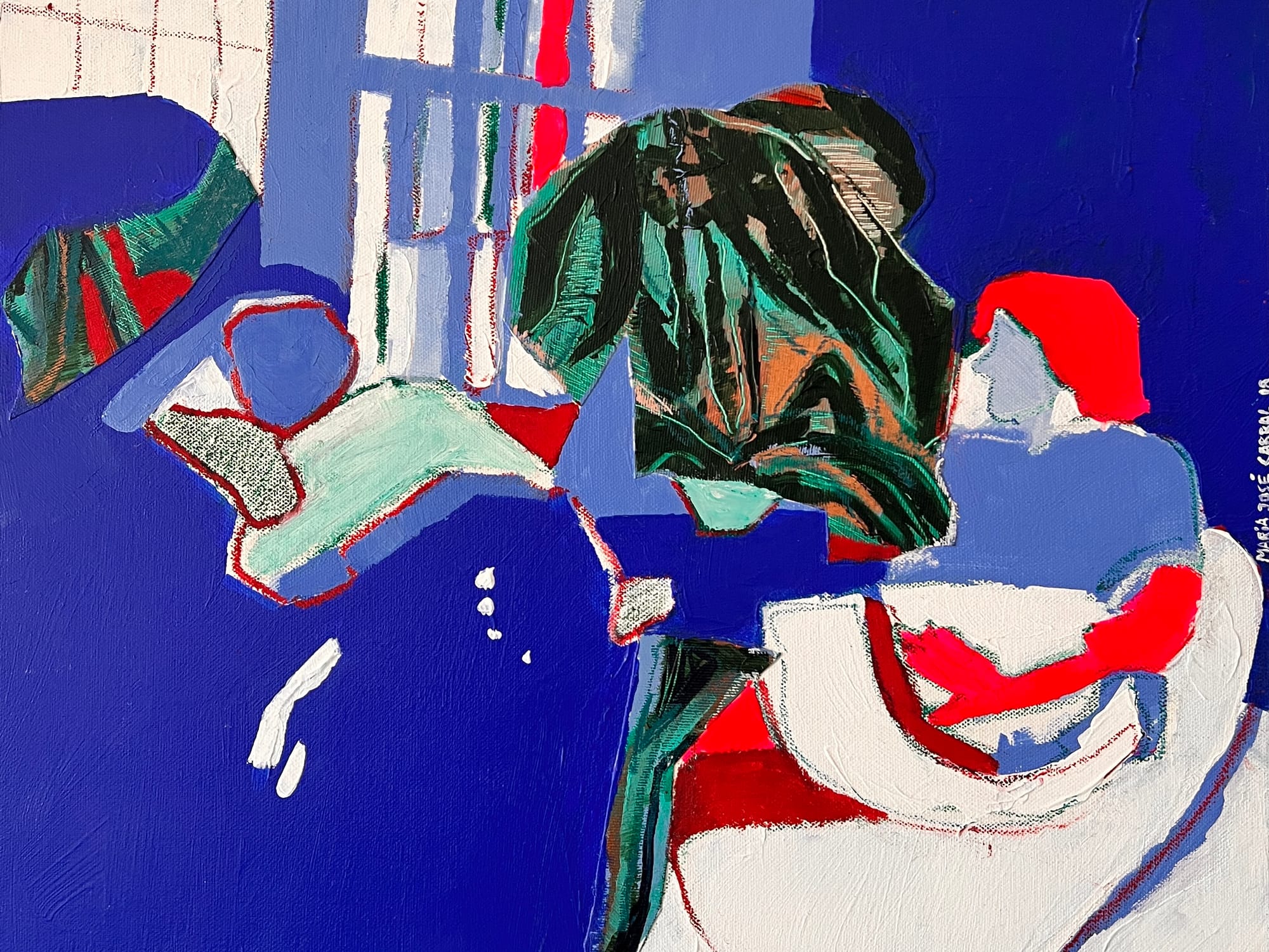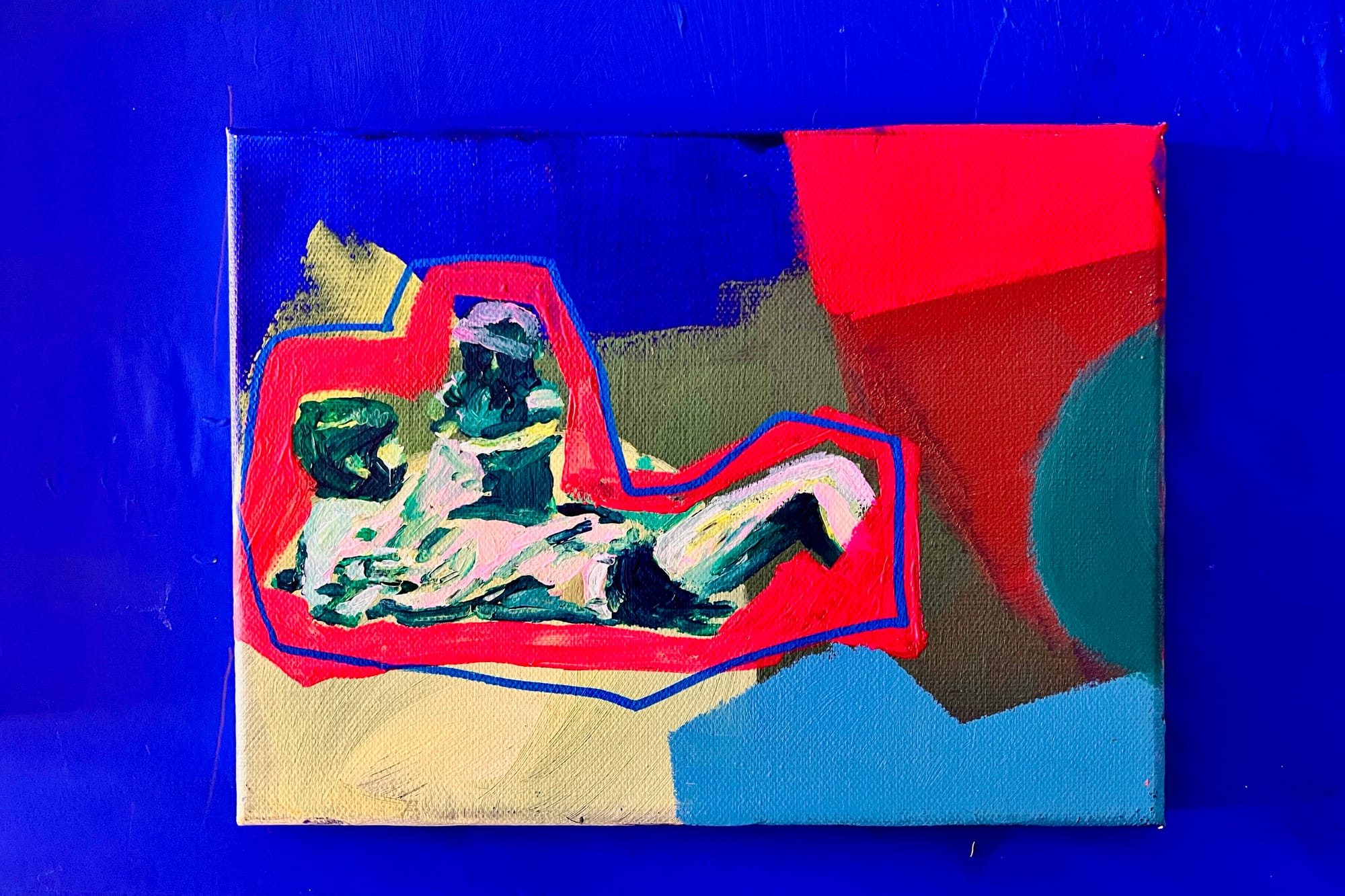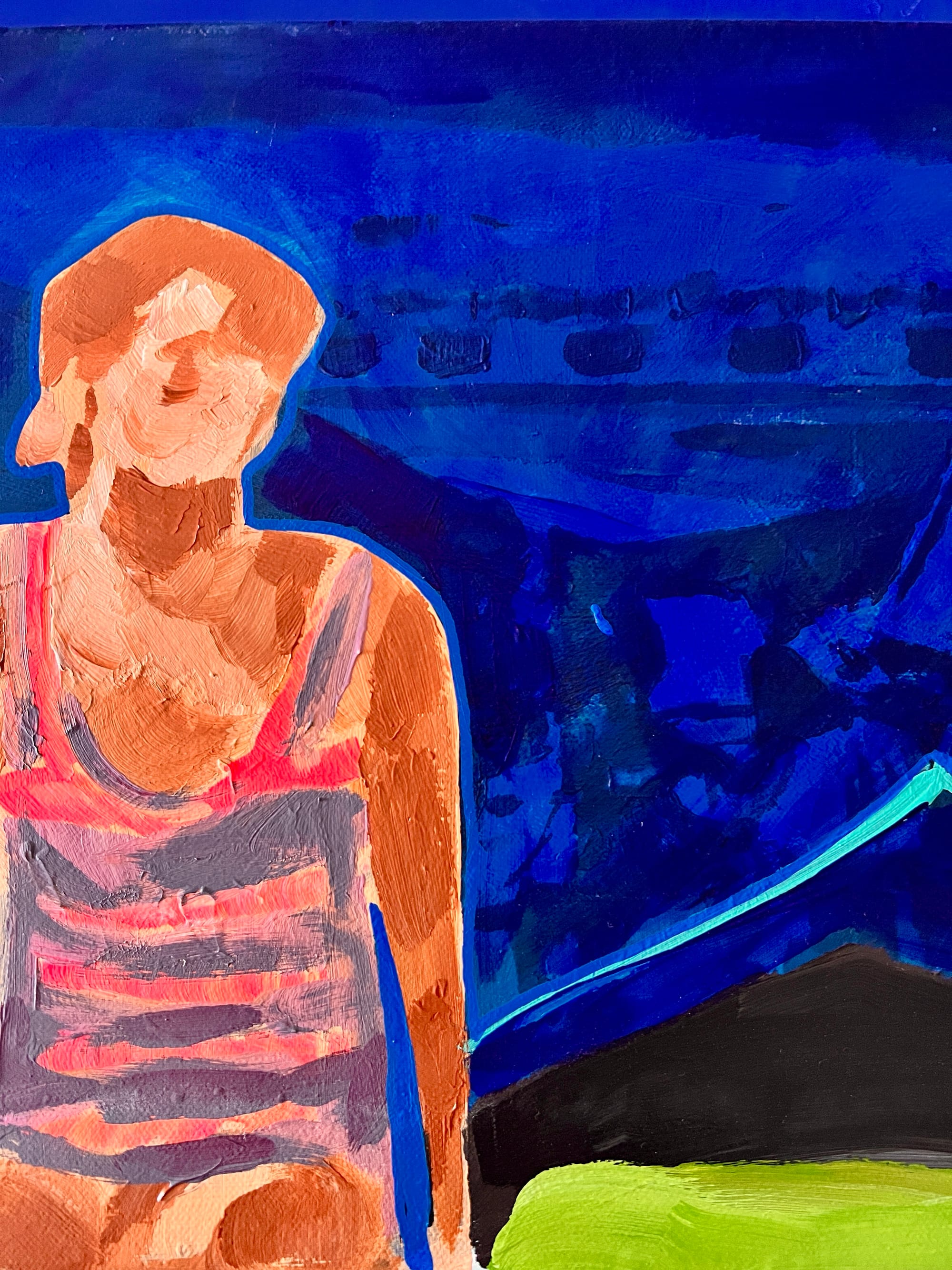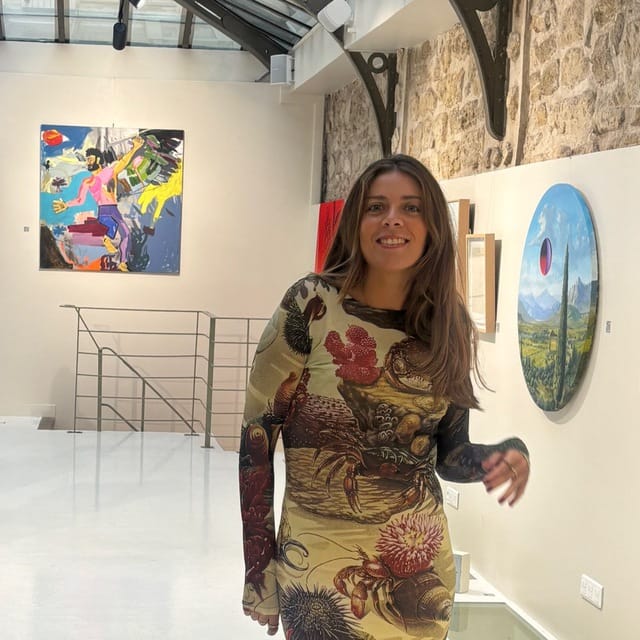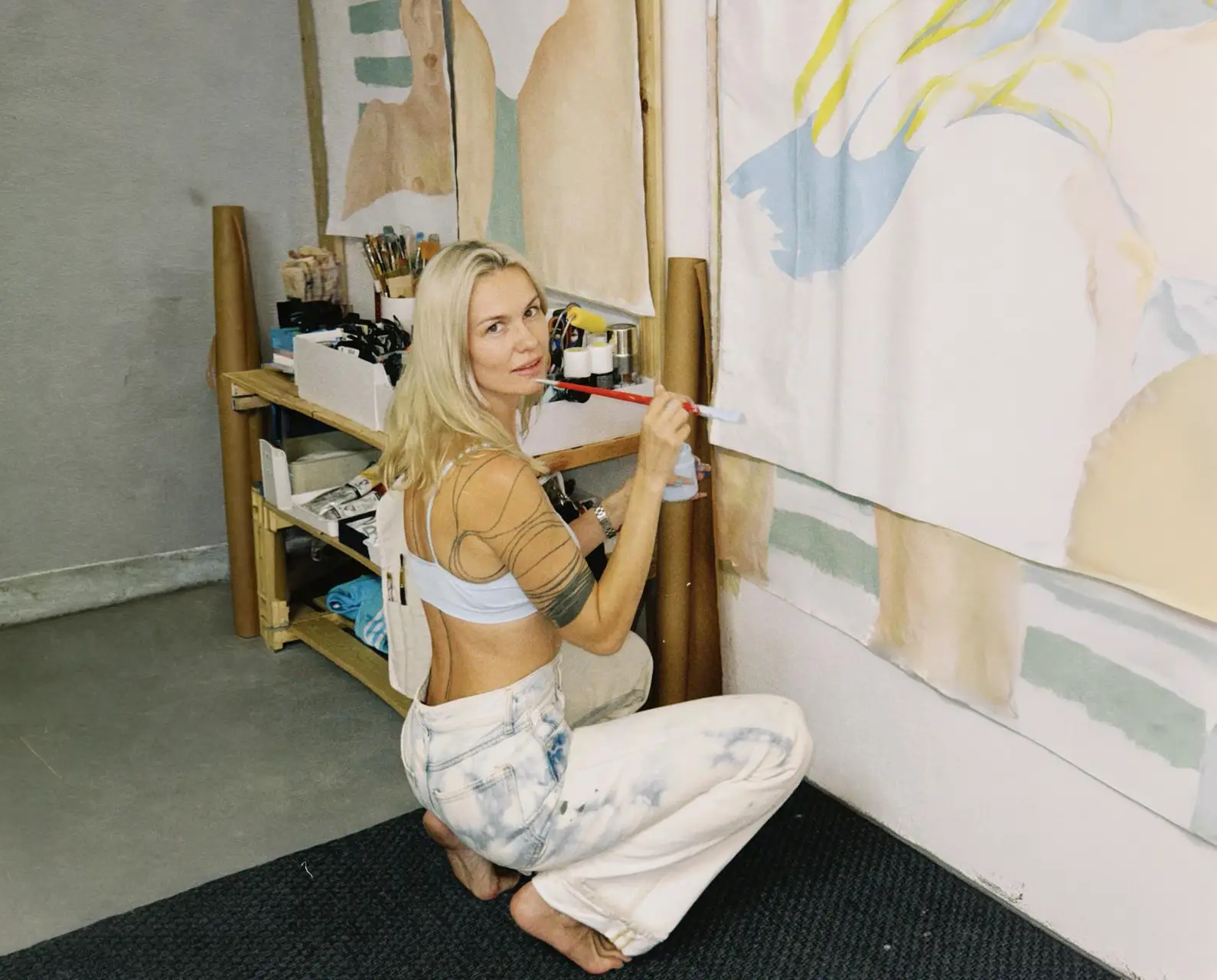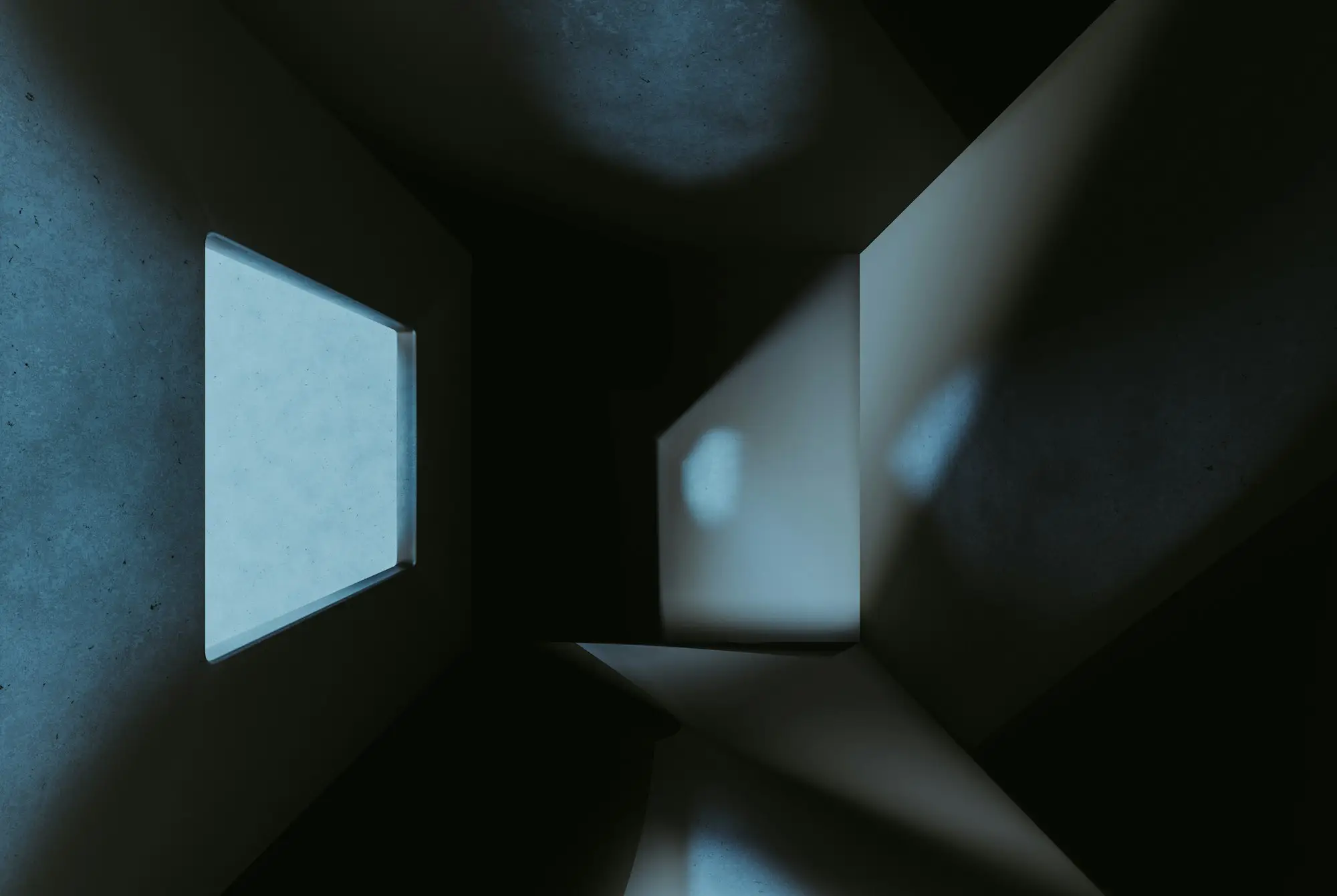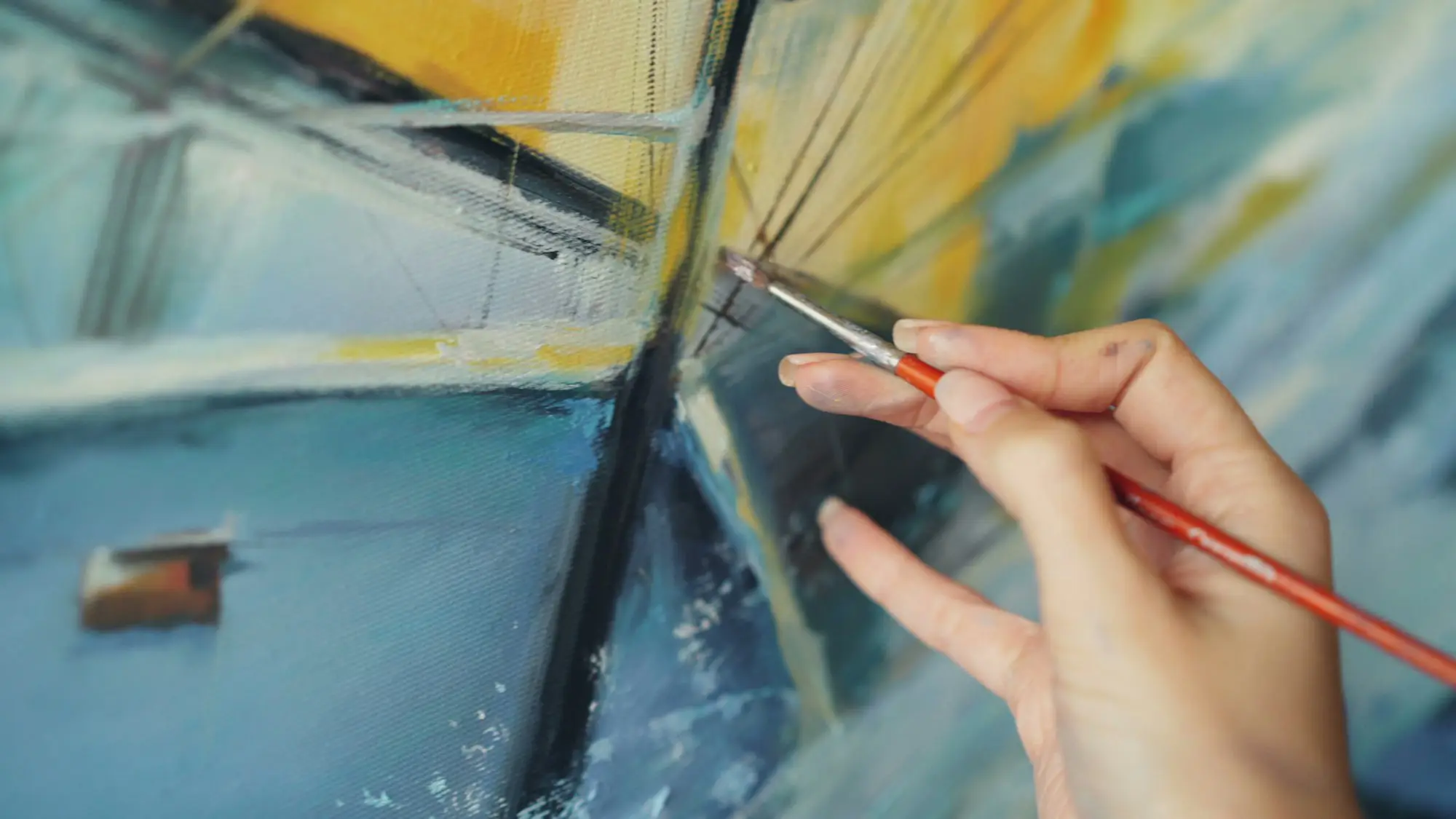Three questions to Maria José Cabral
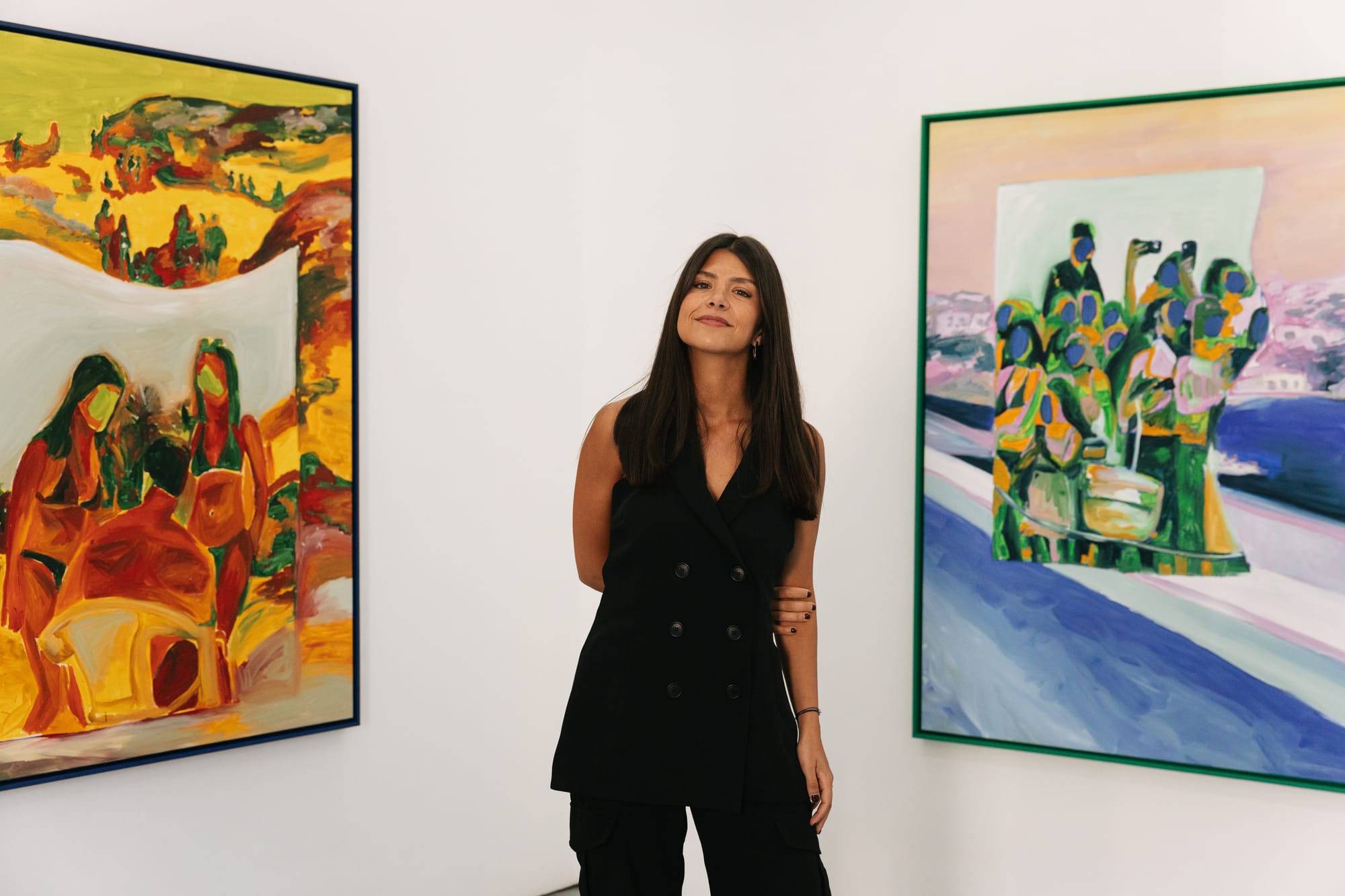
About Maria José Cabral
Maria José Cabral (Lisbon, 1993) is a contemporary artist based in Lisbon, Portugal, recognized for her vibrant layered paintings on both canvas and paper, which explore the dynamic interplay between imagination and reality. Her work is deeply rooted in themes of memory and dreams, capturing fleeting moments that hover between the conscious and unconscious. Working primarily with acrylics, Maria José’s style is defined by her bold and extensive use of color, creating immersive scenes where vivid hues merge fluidly with dreamlike forms.
Quoting Maria José, in her work: “Reality and fiction interact through layers.”
You have told us art has been in your life since an early age and that you even used your room walls as canvas. Can you tell us more about how this support helped your journey and walk us through it?
Yes, it’s true. I started drawing on the walls of my room before I even knew how to articulate what art was. That early freedom, the fact that I was allowed to make marks where they “shouldn’t be,” taught me two fundamental things: first, that creativity has no fixed place; and second, that support - be it a wall or a person - matters deeply. My family nurtured that impulse. They didn’t rush to repaint the walls or tell me to stop, instead, they encouraged the act of expression itself. That kind of support allowed me to grow with curiosity and confidence, and it’s something I carry into the studio today, the belief that making art is as much about creating space as it is about filling it.
Your paintings feature faceless figures in vivid, almost otherworldly colors. What draws you to this visual language, and what do these anonymous figures represent for you?
The facelessness is deliberate. These figures aren’t portraits of specific people, they’re vessels for memory, emotion, and presence. By removing facial features, I create a space where the viewer can step in and inhabit the scene. There’s something quietly subversive in that refusal to define, it makes the body carry the story through posture and placement rather than through personal details.
The color is where I give in to emotion. I use bold, vivid palettes — often joyful, even in scenes that stem from memory. That contrast is intentional. I’m drawn to the idea that memory isn’t always pale or distant, it can be bright, saturated, full of life. The color disrupts the expectation of melancholy and instead opens up a more complex emotional space - one where joy and absence can coexist.
Your work has traveled from Lisbon to New York to Venice. How does your Portuguese identity show up in your paintings, and have you noticed different cultural responses to your work?
My Portuguese identity runs underneath everything, often quietly. It’s in the light, the atmosphere, the melancholy. There’s a word in Portuguese “saudade” that I think explains it best. It’s a kind of longing that doesn’t ask to be solved. I think many of my images carry that emotional weight, a sense of absence, or of time suspended.
As for cultural responses, they vary, of course. In Lisbon, viewers often recognze the emotional codes more intuitively. In New York or Venice, the reading is often more formal or conceptual, which I find enriching. What’s been beautiful is seeing how something so personal, these fragments of memory and displacement, can resonate across borders, even when the references are not shared. That’s what keeps me making: the possibility that something so specific can still feel universal.
Our top selection of Maria's works
